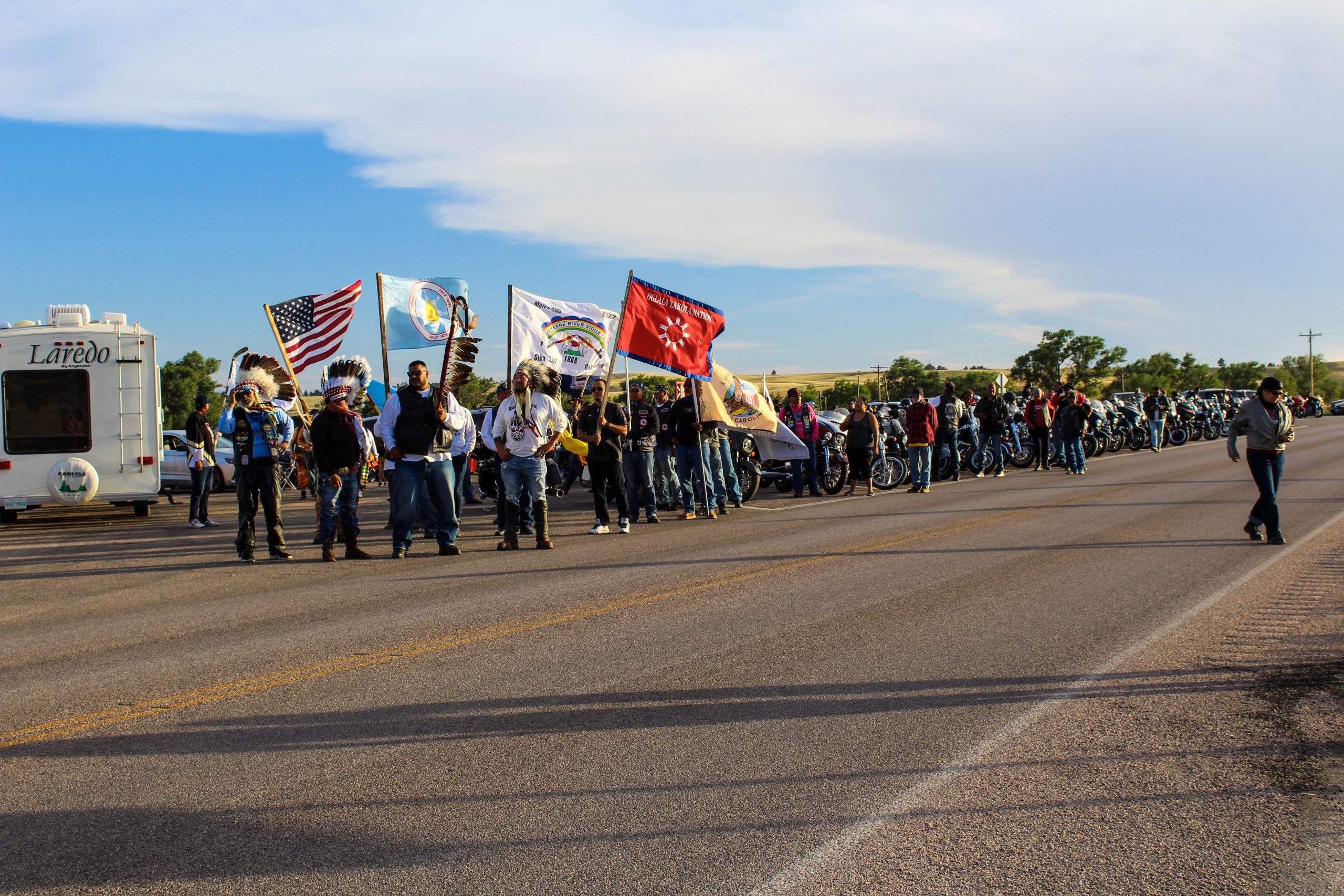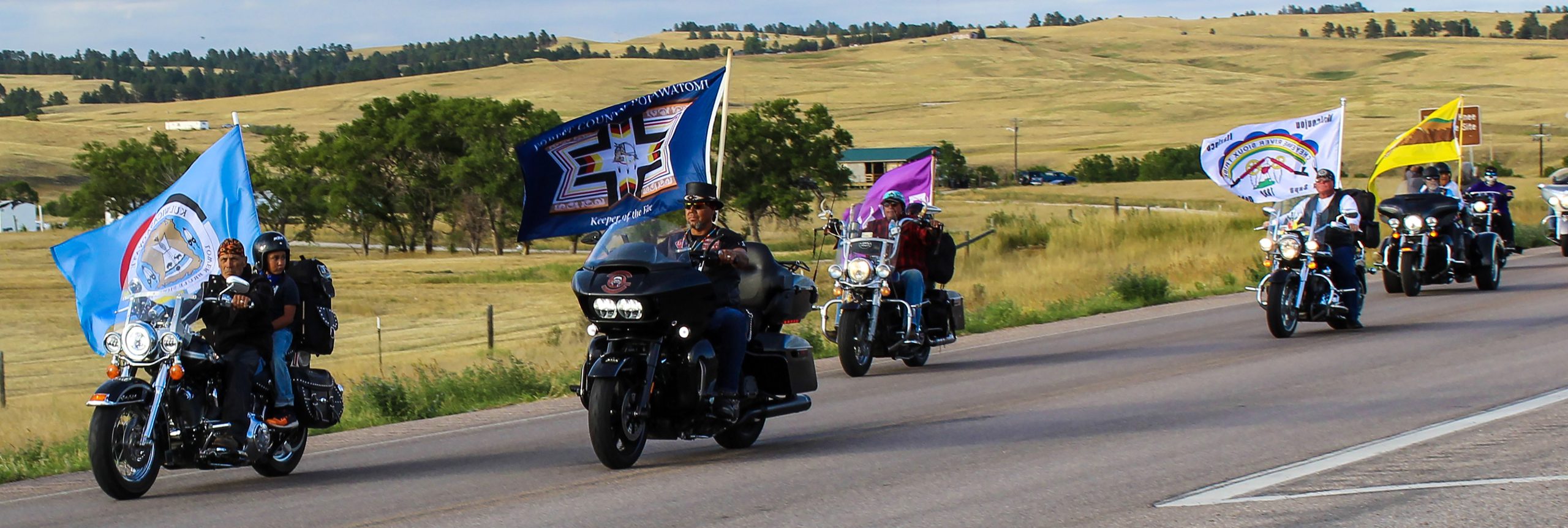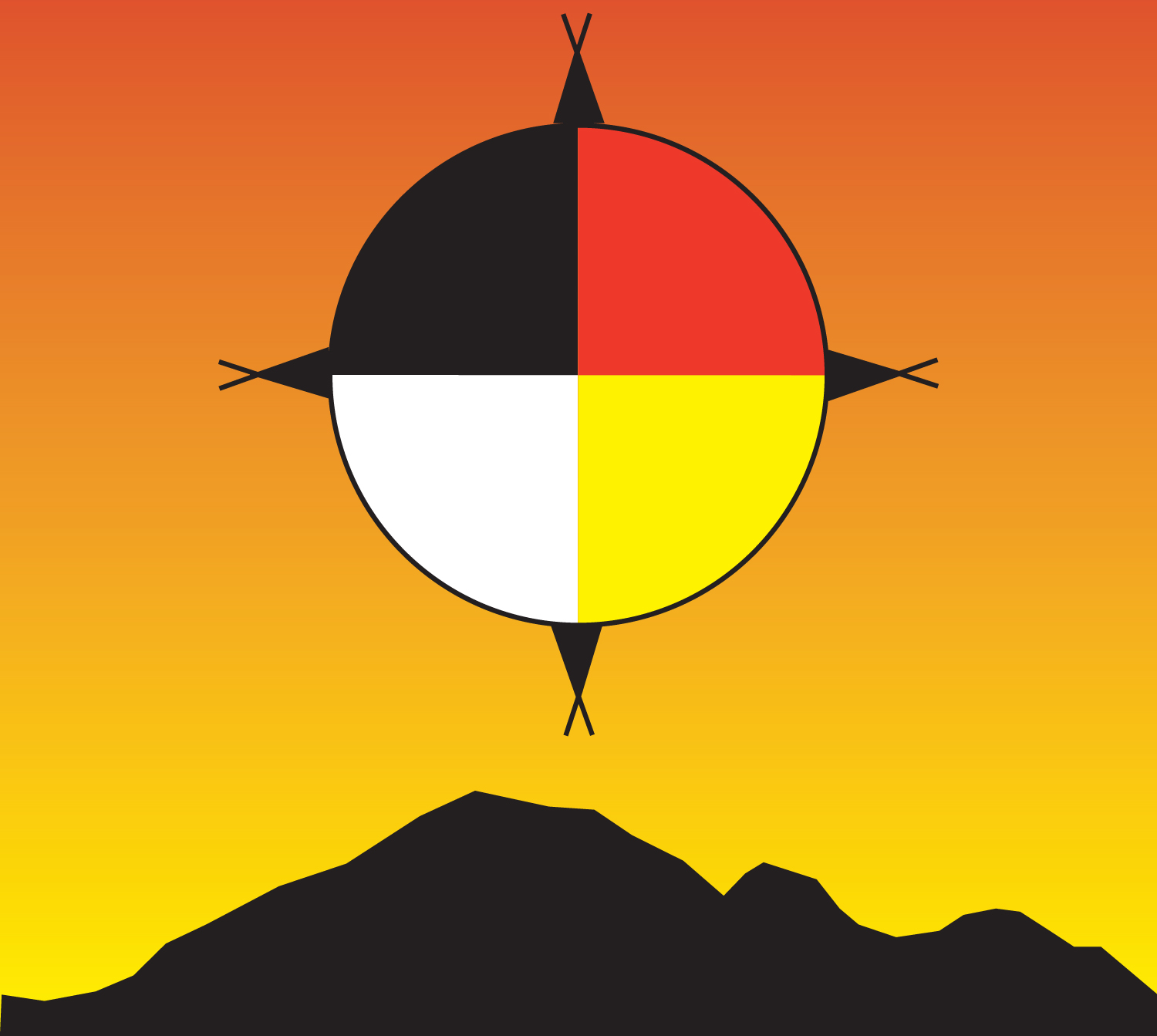Indianz.Com > News > Native Sun News Today: Memorial ride honors lives lost at Wounded Knee

They rode with a mission
To pay homage to the ancestors who died at Wounded Knee
Wednesday, August 24, 2022
Native Sun News Today Assistant Editor
WOUNDED KNEE – On Saturday evening, August 5, one could hear the low throaty growl of motorcycle engines coming from a distance.
As the riders approached the Wounded Knee massacre site the sounds of their engines turned to a roar. A roar that reminded onlookers that these bikers rode with a mission – a mission to preserve the memory of the innocent Lakota People who suffered and died on December 29, 1890.
As they drove onto the Wounded Knee site, echoes of drumbeats reverberated through the hillsides stained with the bloodshed of the followers of Hehaka Gleska (Spotted Elk) also known as Si Tanka or Big Foot. In December of 1890 Hehaka Gleska and a group of ghost dancers had left the Cheyenne River Indian Reservation shortly after Hunkpapa Itancun Tatanka Iyotaka (Chief Sitting Bull) was killed up north on the Standing Rock Reservation.


NATIVE SUN NEWS TODAY
Support Native media!
Read the rest of the story on Native Sun News Today: They rode with a mission
Contact Ernestine Anunkasan Hupa at cahunpigiwin@gmail.com
Note: Copyright permission Native Sun News Today
Search
Filed Under
Tags
More Headlines
Cronkite News: Long COVID cases remain high in Arizona
Native America Calling: Eyes in the sky for development, public safety, and recreation
Native America Calling: Three new films offer diverse views of Native life
NAFOA: 5 Things You Need to Know this Week
Chuck Hoskin: Cherokee Nation works toward cure for arthritis
Native America Calling: Protecting young people from the down sides of social media
Cronkite News: Fake ‘shaman’ among candidates failing to make Congressional ballot
Native America Calling: New Native voices in poetry
Cronkite News: Tribes air concerns about border at hearing in nation’s capital
Native America Calling: Indiginerds descend on Oklahoma City
Native America Calling: Political leaders target tribes with unfounded claims
Cronkite News: First Native woman in space shares unique journey
Native America Calling: Tackling a troubling trend for Native women in prison
Chuck Hoskin: Cherokee Nation safeguards our Native language
Native America Calling: How will $1.5 billion in opioid settlement money help the populations hit the hardest?
More Headlines
Native America Calling: Eyes in the sky for development, public safety, and recreation
Native America Calling: Three new films offer diverse views of Native life
NAFOA: 5 Things You Need to Know this Week
Chuck Hoskin: Cherokee Nation works toward cure for arthritis
Native America Calling: Protecting young people from the down sides of social media
Cronkite News: Fake ‘shaman’ among candidates failing to make Congressional ballot
Native America Calling: New Native voices in poetry
Cronkite News: Tribes air concerns about border at hearing in nation’s capital
Native America Calling: Indiginerds descend on Oklahoma City
Native America Calling: Political leaders target tribes with unfounded claims
Cronkite News: First Native woman in space shares unique journey
Native America Calling: Tackling a troubling trend for Native women in prison
Chuck Hoskin: Cherokee Nation safeguards our Native language
Native America Calling: How will $1.5 billion in opioid settlement money help the populations hit the hardest?
More Headlines
